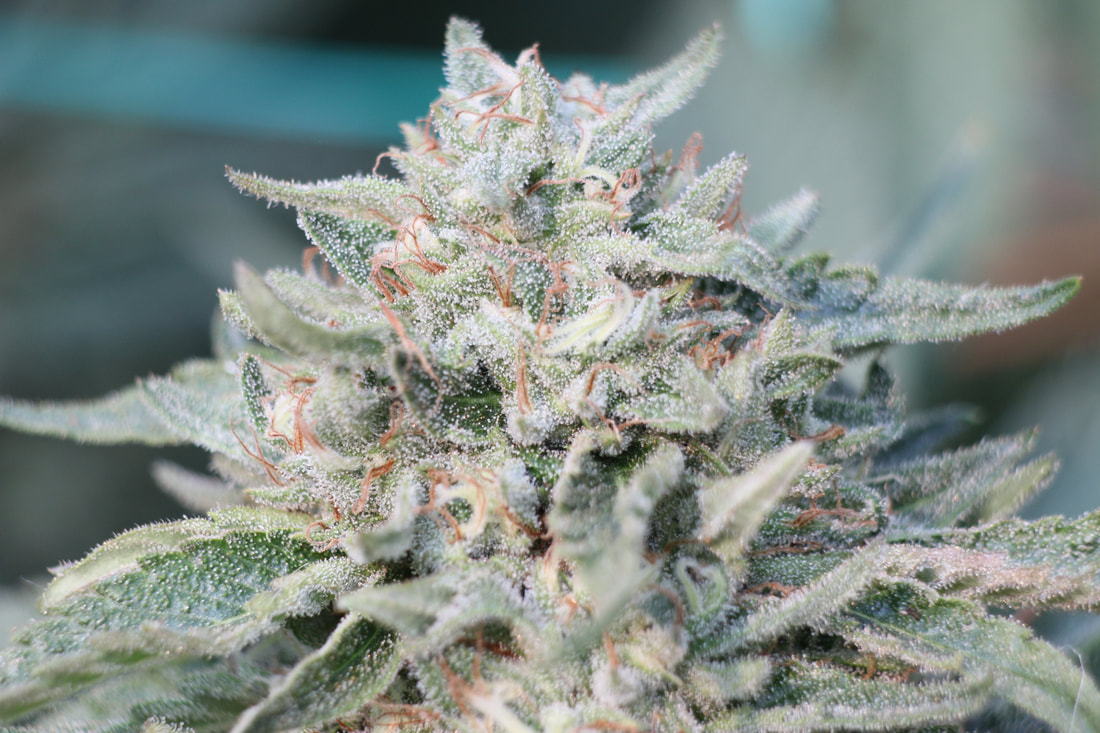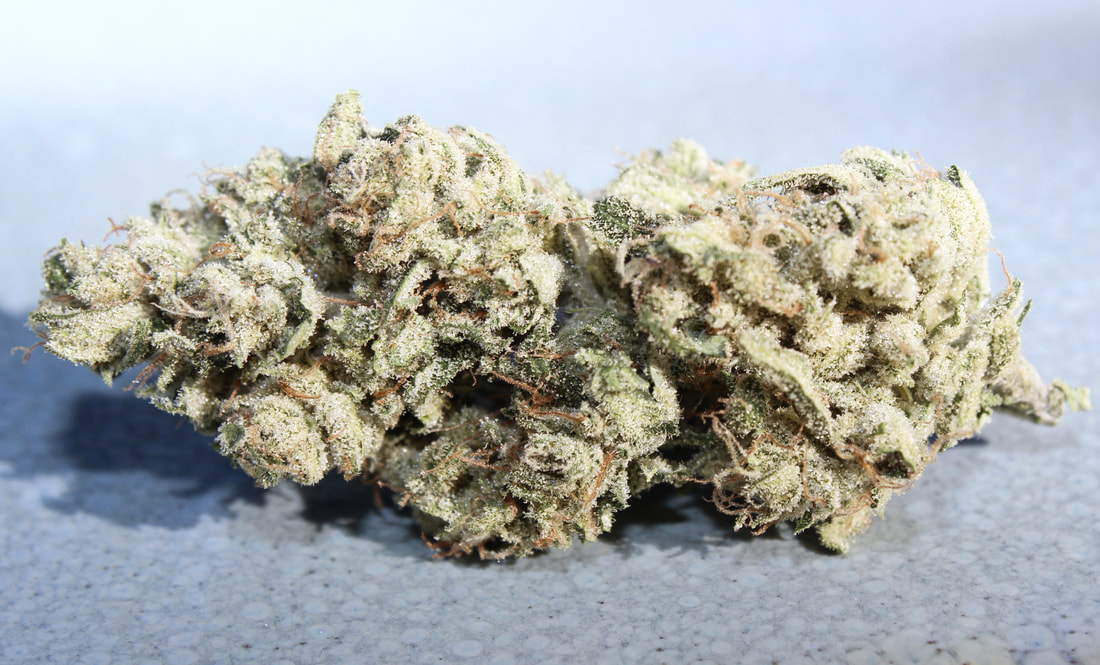
Historically, the “Top Shelf” at most retail dispensaries has been largely and almost exclusively indoor grown. There is no question that an indoor cultivator with great skill can create a product that looks just right, and is harvested at the exact finishing time. In fact every watering, feeding and light cycle can be perfectly timed out with a timer, often controlled entirely from the grower’s mobile device while they are somewhere else besides their grow room. However, it is our opinion that the sun is still better than any light bulb, and that full season naturally sungrown flowers have the most optimal terpene, cannabinoid, and flavonoid profiles.

Regenerative Cannabis: The Time is Now for Conscious Consumers and Farmers to Redefine the New Top Shelf, Before it is Too Late.
Historically, the “Top Shelf” at most retail dispensaries has been largely and almost exclusively indoor grown. There is no question that an indoor cultivator with great skill can create a product that looks just right, and is harvested at the exact finishing time. In fact every watering, feeding and light cycle can be perfectly timed out with a timer, often controlled entirely from the grower’s mobile device while they are somewhere else besides their grow room. However, it is our opinion that the sun is still better than any light bulb, and that full season naturally sungrown flowers have the most optimal terpene, cannabinoid, and flavonoid profiles.
PictureOur Full Season Sungrown Strawberry Cough, now available at Solful cannabis dispensary in Sonoma County, CA
Truth be told, really great growers committed to their craft from start to finish grow really great weed, indoors or outdoors. However, it is harder to be Regenerative, to go way beyond sustainable, when you are not using the sun or growing in nature, and consumers should and do care about how their product is made. And yes, we will admit, we do think that all other aspects being equal, a flower sungrown in nature is a superior product.
Like any great work of art, the closer it is to truly divine inspiration, the greater the masterpiece; there is a certain undeniable magic to the spiritual and connective experience of a medicinal plant grown in this artisanal and regenerative way, with great love and attention in complete harmony with nature and the cosmic vibration of all existence.
But too often, the retail dispensary, many of which are now vertically integrated, is not even giving consumers the chance to compare a craft sungrown product with their own mass produced low to medium grade product because they need you to buy theirs, which they produce en mass on the cheap, cheaper than the low ball price they were once willing to give small farmers, so that they can continue to mark up the price over 300% to the customer and make their profit despite all the money they just dumped into replacing small craft farmers with mediocre mass production—and all those light bulbs. Many retailers have vertically integrated due to loopholes in the new canna-laws and are now over-producing to the point that they are competing with farmers for shelf space at other retail locations, when a year ago they offered to their consumers craft cannabis from small farmers. So, be wary as a consumer. If they don’t carry any sungrown, they’re probably selling you their vertically integrated indoor.
And now the consumer gets to pay more for an inferior product without even being given the choice in many cases. So who wins here? Not the consumer. Not the small craft farmer. Only a few large corporations. Sound familiar?
PictureStrawberry Cough growing in poly-culture alongside Tomatillos in the garden
Two months into recreational cannabis legalization in California, the small farmer faces the steepest part yet of the climb in the arduous road to the California retail market. Only 1% of the existing heritage farmers in the three counties of the Emerald Triangle have attained a state license. These tens of thousands of small farmers have historically produced 60% of the cannabis consumed nationwide, and were falsely promised by the state of California a chance to finally come out of the shadows. The burgeoning legal market threatens to leave most of us behind.Out of the 1% of the small Emerald Triangle farmers who have attained a state permit, it is expected that about half will fail to make it through the hoops of regulation and/or go out of business this year.
Meanwhile, large corporate entities continue to claim the majority of the state licenses and retail shelf space thus far handed out.
So what does this mean? It means that it is still pretty damn hard for most Californians to find a nice selection of fair trade, ethically and regeneratively produced pure, clean, sungrown medicine from a truly small, artisanal craft farmer in their local dispensary. And it isn’t because we don’t exist! Who is going to bat for the conscious consumer? Who is going to bat for the small farmer?
A few folks are. Solful, a licensed recreational and medical dispensary in Sebastopol, Sonoma County, is likely one of the finest examples of a retailer who is supporting small, craft, Regenerative cannabis farms. Solful is dedicated to curating high quality and impactful products that are consciously cultivated, safely produced, and lovingly offered to the community. They vet their farmers thoroughly to ensure that our practices are second to none, seeking out and offering the purest, cleanest, highest quality and most ethically and ecologically produced cannabis products on the market.
We here at Flowerdaze are very excited and thankful that our entire line of limited release, single batch, full season sungrown flowers are currently available to anyone over age 21 or with a medical recommendation at Solful.
We were also very excited to attend a Regenerative Cannabis Farmers gathering at Flow Kana Institute a couple weekends ago. It was a very positive gathering at a time when regenerative, artisanal farmers need to come together most and define who we are and what Regenerative Farming truly means so that conscious consumers can know the difference between us and all the green-washed corporate propaganda that is sure to over-saturate the general retail market.
The problem is, will any of this happen in time to save the small farmer from sinking under the new regulations and competition from vertically integrated corporations?
Even with a growing Regenerative cannabis movement, it still remains a question whether most small craft farmers will find their way to the retail shelves. Those of us who have been fortunate enough to reach the shelves are still facing a steep uphill battle to secure regulated transport and distribution channels and fair trade prices before we are starved out.
In Trinity County, we still don’t have locally licensed Transport or Distribution channels and yet farmers are being asked to pay yet another year’s worth of fees without even having had the chance to operate legally before having to pay for another year. A fee study of our county program has yet to be done, but it is the third “annual” fee in just over a year and the second “annual” fee my family alone has paid in less than 6 months to the county! Due to discrepancies between our local ordinance’s expiration rules and the state’s regulatory system, we are caught in a Catch 22.
We’ve had our temporary state license for only less than one month, are working our butts off to attract out-of-county distributors and transporters to come all the way out here, and meanwhile our own county is about to put us out of business, with more fees, before we can even say the words “Net 60”. It is really coming down to the wire, we hate to say it, but it’s true. It is worse than we feared. We still have a glimmer of hope that some miracle will happen. And if we don’t make it, that hopefully some little guy somewhere will.

if you are reading this in horror, you might be wondering, what can a person do? First, demand your local dispensary carry Regenerative Sungrown cannabis. If they don’t know what that means, educate them.
Secondly, only support retailers that do offer Sungrown cannabis from craft farmers with ethical farming practices. Ask them if they pay the farmer a fair trade price; ask them if they are willing to be transparent about their markups to the consumer.
Start writing letters to our state elected officials if you voted for Prop 64/Recreational Cannabis, because your state government has created a loophole in the law voters passed that allows large entities to completely vertically integrate and hold as many licenses as they wish, allowing them to monopolize as much of the industry as they can afford to buy.
Regenerative Farming, however, is a movement that is not canna centric and that goes far beyond the realm of this one plant in the kingdom. And, it isn’t something money can buy. This is critical to remember in these difficult times. The longterm problems we all face are the result of a much bigger epidemic.
Regenerative Farming is a way for farmers and all people to utilize their own resources to provide abundance and resilience against global corporatization of local natural resources, including water, agricultural land use and the genetic diversity of seeds, while improving the health of the land and themselves. Regenerative farming is inclusive of all natural farming practices, including biodynamics, Korean natural farming and permaculture, committed to building fertility in closed loop systems on the farm. When necessary to source offsite farm inputs, Regenerative farming emphasizes the importance of doing so locally, ethically and sustainably.
Farmers big and small of all crops all over the world are facing the same issues today, and regenerative natural farming is proving to be the solution, by consistently lowering costs and artificial chemical contamination, raising crop quality, and improving ecological, soil, individual and community health.
Even many organic inputs are sourced from industrial waste byproducts or unsustainable mining operations and are shipped globally, resulting in massive carbon footprints and high costs for the farmer. As the burgeoning legal cannabis industry is greenwashed by false marketing promises of sustainability,Regenerative Farming will define a new standard of sustainability for consumers of our food and medicine that are in line with the values that the plant teaches us.
It is imperative that all of us demand justice for our food and natural medicine systems or they will continue to be threatened, here and across the globe. The state of the new “legal” (corporatized) California cannabis market makes us wonder what price the “end of prohibition” is truly costing us, and after everything we have been through to get here.